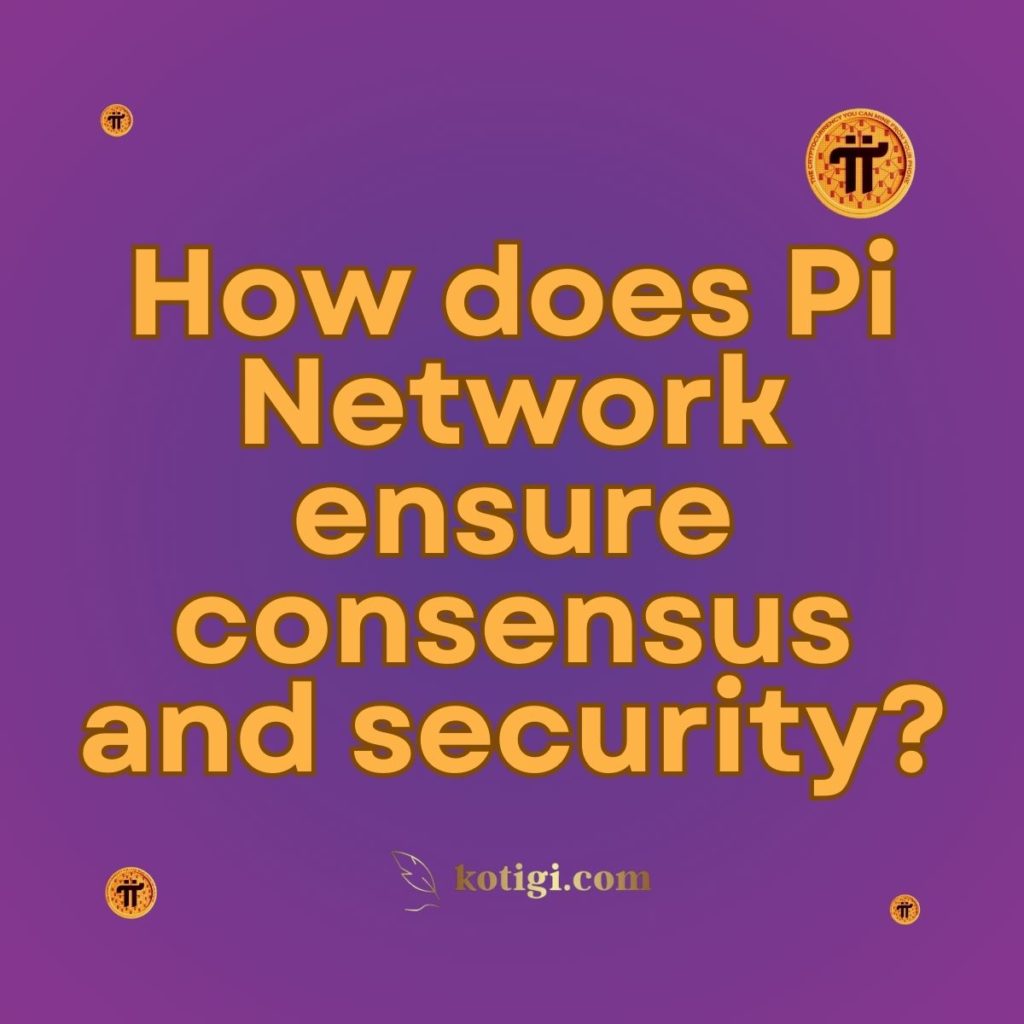
How does Pi Network ensure consensus and security?
Pi Network employs a multi-layered approach to ensure consensus and security within its decentralized ecosystem. The project leverages innovative consensus mechanisms, user-centric security practices, and a carefully designed architecture to maintain the integrity of its network. Here’s a breakdown of how Pi Network addresses these critical aspects.
1. Utilizing the Stellar Consensus Protocol (SCP)
1.1 Overview of the Stellar Consensus Protocol (SCP)
Pi Network uses a variant of the Stellar Consensus Protocol (SCP) to secure its network. SCP is a Federated Byzantine Agreement (FBA) protocol that allows for fast and efficient consensus without the need for energy-intensive mining processes. Unlike Proof of Work (PoW) or Proof of Stake (PoS), SCP relies on a quorum system where nodes agree on the validity of transactions through a series of interconnected nodes, or “quorum slices,” that overlap to form a consensus.
1.2 Benefits of SCP for Pi Network
The choice of SCP for Pi Network offers several benefits:
- Energy Efficiency: Unlike traditional PoW mechanisms, SCP does not require high computational power, making Pi Network more sustainable and environmentally friendly.
- Decentralization and Scalability: SCP facilitates decentralized consensus that scales effectively as more nodes join the network.
- Security Against Attacks: By relying on quorum slices and a federated model, SCP reduces the likelihood of malicious attacks that could disrupt consensus or compromise the network.
2. Building a Trust Graph for Consensus
2.1 Trust Circles and Security Circles
Pi Network introduces the concept of Security Circles to establish a “Trust Graph” among users. Security Circles are groups of 3-5 users created by each member of the Pi Network. These circles collectively build a web of trust that helps to validate genuine users and transactions. This decentralized approach makes it difficult for bad actors to manipulate or attack the network.
2.2 Strengthening the Trust Graph
The Trust Graph works alongside SCP to achieve consensus:
- Preventing Sybil Attacks: By requiring users to be validated within security circles, Pi Network mitigates the risk of Sybil attacks, where a malicious entity could create multiple fake identities to take control of the network.
- Enhancing Network Reliability: The interconnected nature of security circles ensures that consensus is achieved based on trusted relationships, thus reinforcing network reliability.
3. Implementing Multi-Factor Security for User Accounts
3.1 Encouraging Strong Authentication
To secure user accounts, Pi Network encourages multi-factor authentication (MFA), including:
- Password Protection: Users must create strong, unique passwords to protect their accounts.
- KYC Verification: Pi Network employs a Know Your Customer (KYC) process to verify user identities. This step is critical not only for regulatory compliance but also for preventing fraudulent activities and securing the network from bad actors.
3.2 Regular Security Audits and Updates
Pi Network’s development team is committed to regular security audits and updates to identify vulnerabilities and deploy patches to strengthen the network’s security posture. This proactive approach helps to ensure that user data and transactions remain secure.
4. Building a Layered Security Model
4.1 Network Layer Security
Pi Network implements several network-level security measures:
- End-to-End Encryption: All communications within the Pi Network are encrypted to protect user data from interception and unauthorized access.
- Decentralized Architecture: By decentralizing its nodes and leveraging SCP, Pi Network minimizes the risk of single points of failure and enhances network resilience against Distributed Denial-of-Service (DDoS) attacks.
4.2 Application Layer Security
The application layer of Pi Network is designed with security in mind:
- Regular Code Reviews and Penetration Testing: To safeguard against potential exploits, the Pi Network development team performs continuous code reviews and penetration testing.
- User Education: The network emphasizes educating its users on security best practices, such as recognizing phishing attempts and securing their devices.
5. Leveraging Community Involvement for Enhanced Security
5.1 Node Validation by Community Members
Pi Network allows its community members to operate nodes, which contributes to decentralization and security. These nodes validate transactions and secure the network while ensuring that no single entity has excessive control over the blockchain.
5.2 Incentivizing Security Contributions
The network incentivizes users who contribute to the security and consensus mechanisms. This could include rewards for running a node, participating in security circles, or helping to identify and report vulnerabilities.
Conclusion
Pi Network ensures consensus and security through a combination of the Stellar Consensus Protocol (SCP), user-driven trust circles, robust authentication measures, and a multi-layered security approach. By focusing on decentralization, energy efficiency, and community engagement, Pi Network aims to create a secure and scalable environment for its growing user base.





